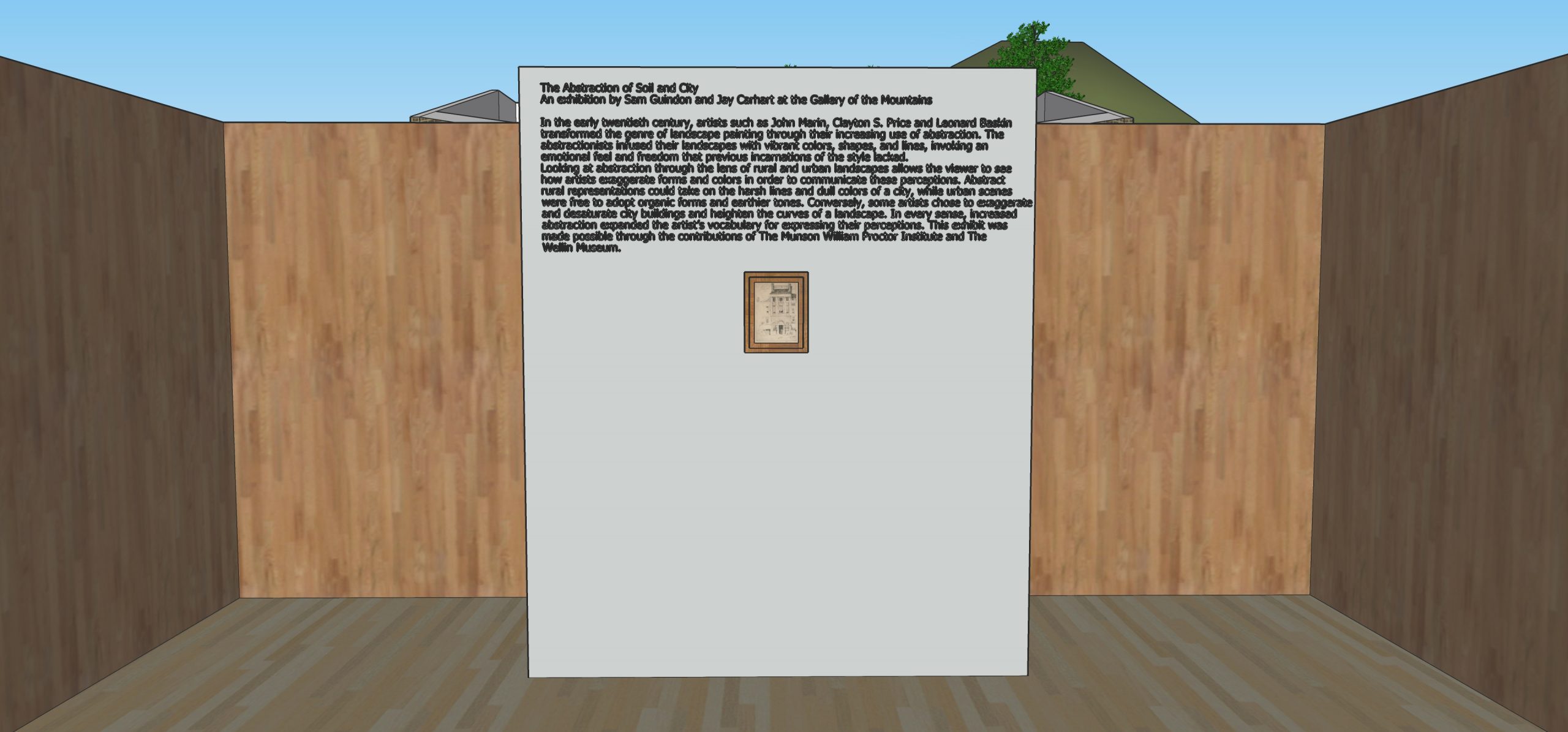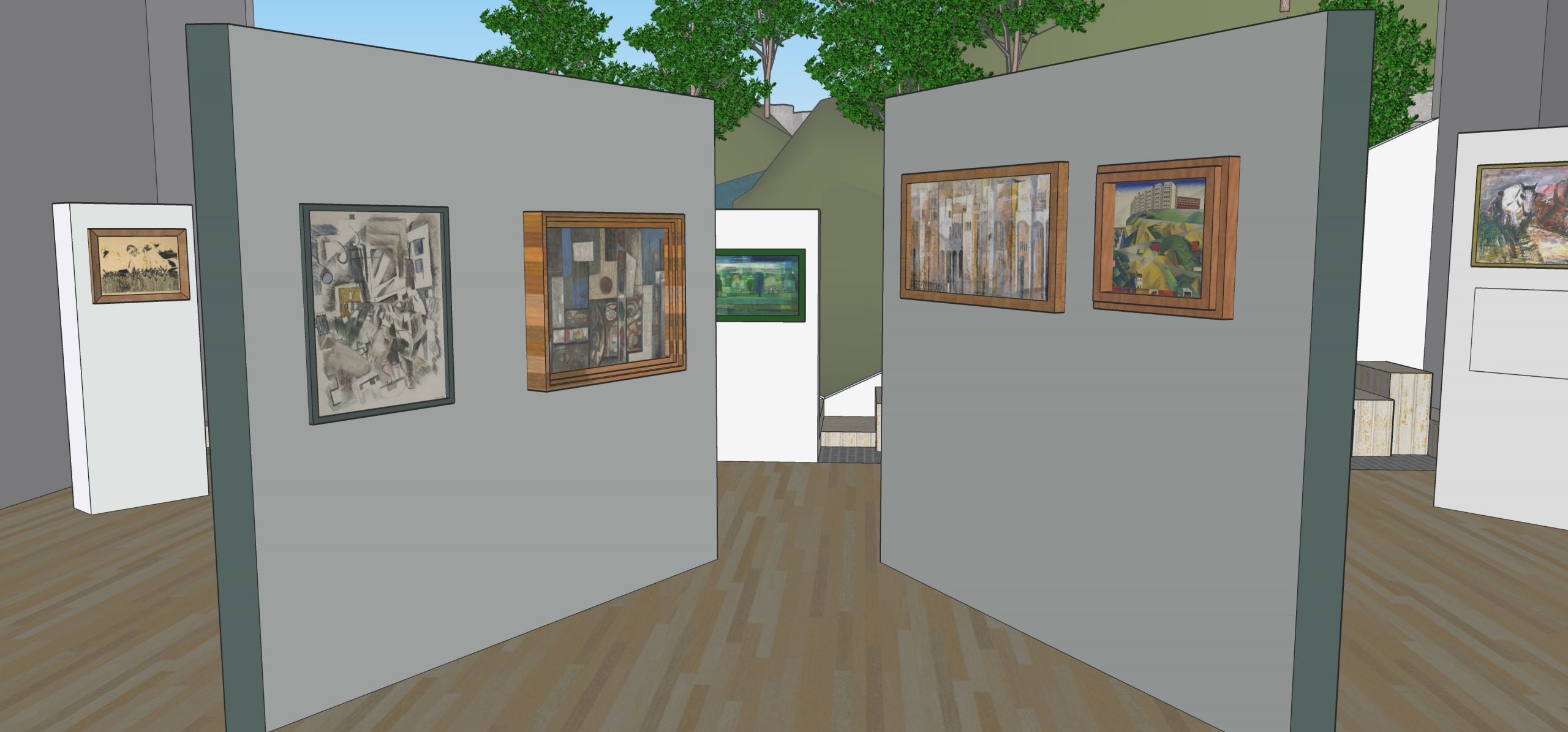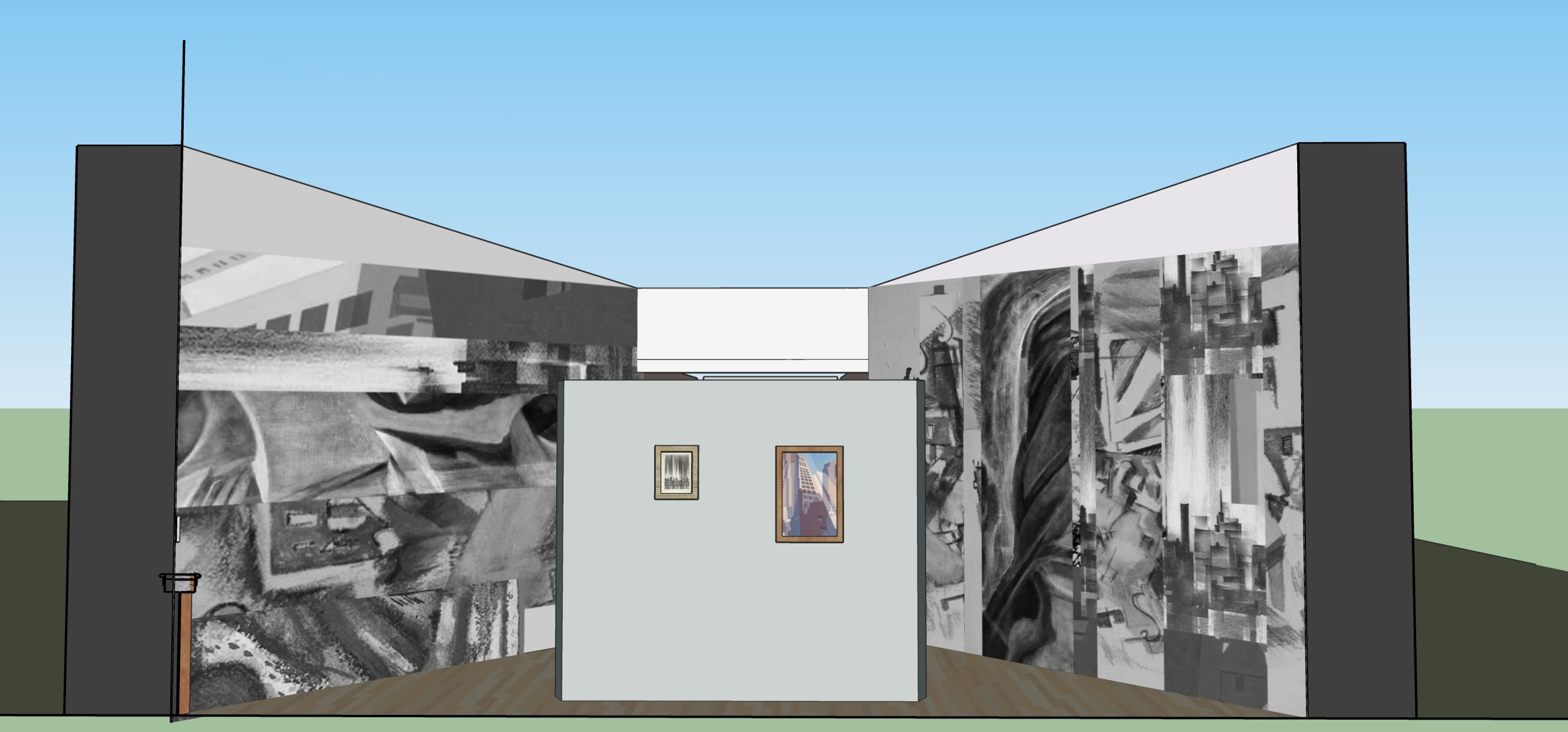The Abstraction of Soil and City
An exhibition by Jay Carhart ’21 and Sam Guindon ’21 at the Gallery of the Mountains
In the early twentieth century, artists such as John Marin, Clayton S. Price and Leonard Baskin transformed the genre of landscape painting through their increasing use of abstraction. The abstractionists infused their landscapes with vibrant colors, shapes, and lines, invoking an emotional feel and freedom that previous incarnations of the style lacked. Looking at abstraction through the lens of rural and urban landscapes allows the viewer to see how artists exaggerate forms and colors in order to communicate these perceptions. Abstract rural representations could take on the harsh lines and dull colors of a city, while urban scenes were free to adopt organic forms and earthier tones. Conversely, some artists chose to exaggerate and desaturate city buildings and heighten the curves of a landscape. In every sense, increased abstraction expanded the artist’s vocabulary for expressing their perceptions. This exhibit was made possible through the contributions of The Munson William Proctor Institute and The Wellin Museum.
The exhibition screenshots below contain embedded information and/or media panels. Click the icon, ![]() , to view this material.
, to view this material.









Abstractionists not only reinvented the traditional landscape, but also redefined what was considered a landscape. Artists like John Marin, Charles Sheeler, and Richard Florsheim explored urbanity, capturing the energy, emotion and complexity of the city. Unconventional in the landscape tradition, these urban examples show the different approaches that artists took, the dark tones of Richard Florsheim against the vibrancy of John Marin or the smooth lines of Preston Dickinson set against the jagged geometry of Louis D. Bunce. There is no one way to approach a cityscape through the lens of abstraction, and each artist takes the subject in their own way.



In rural landscapes, increasing abstraction led to a variety of fresh styles of representation. While many landscapes retained more organic palettes, artists were free to explore a range of evocative compositions and shape language. Artists such as Nahum Tschacbasov and William Palmer experimented with sharper lines and saturated colors to communicate their interpretations of landscapes, while artists like Leonard Baskin and Clayton S Price explored simplified compositions and colors. The freedoms that their abstractions allowed is apparent in the stylistic varieties of the artworks.







Interactive 3D Model
Click the image above to activate the 3D model viewer. The 3D model viewer may take a minute or two to load.
Within the viewer you will be able to orbit, pan, and zoom the 3D model. Select the arrow located on the right side of the 3D model viewer to access these tools.